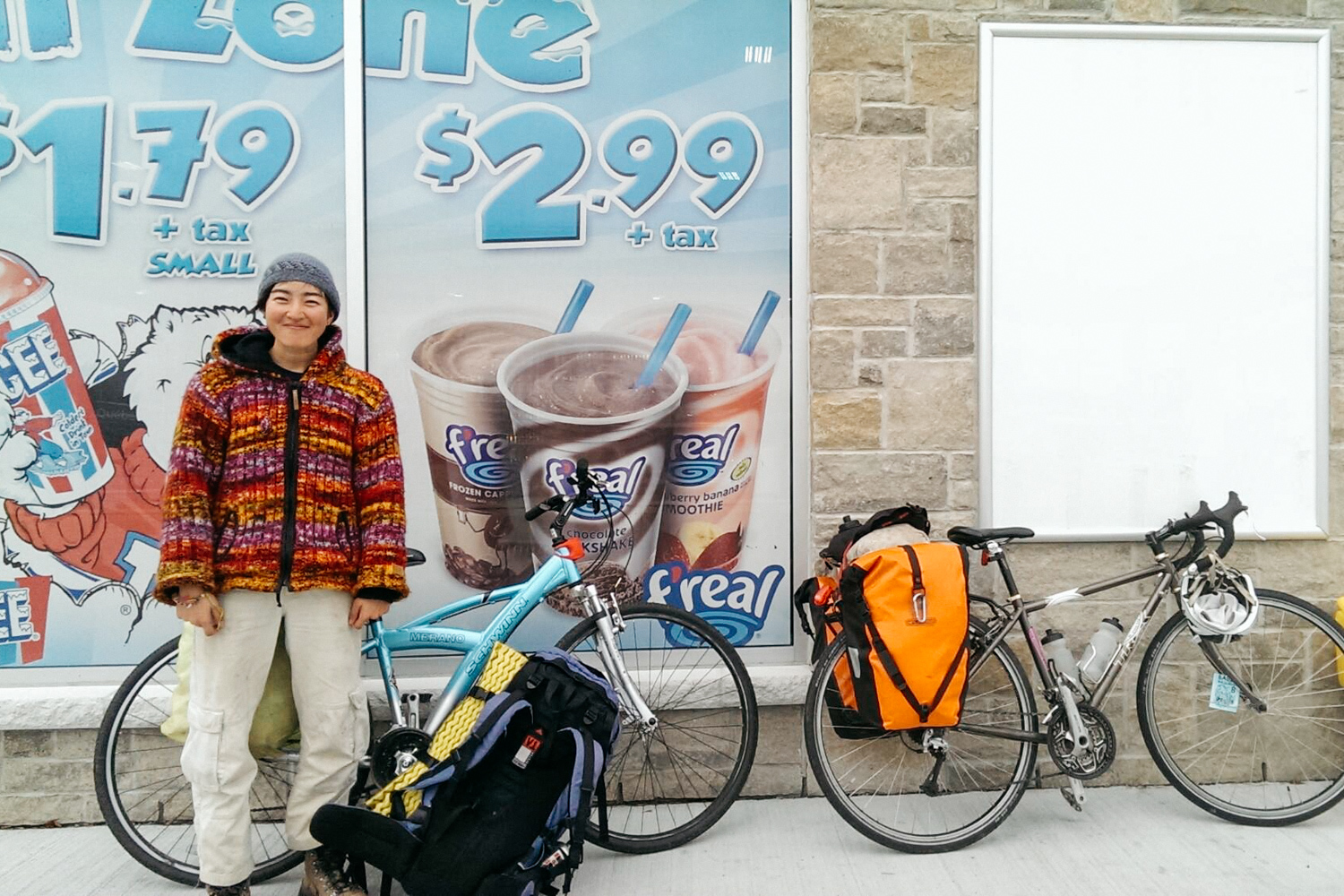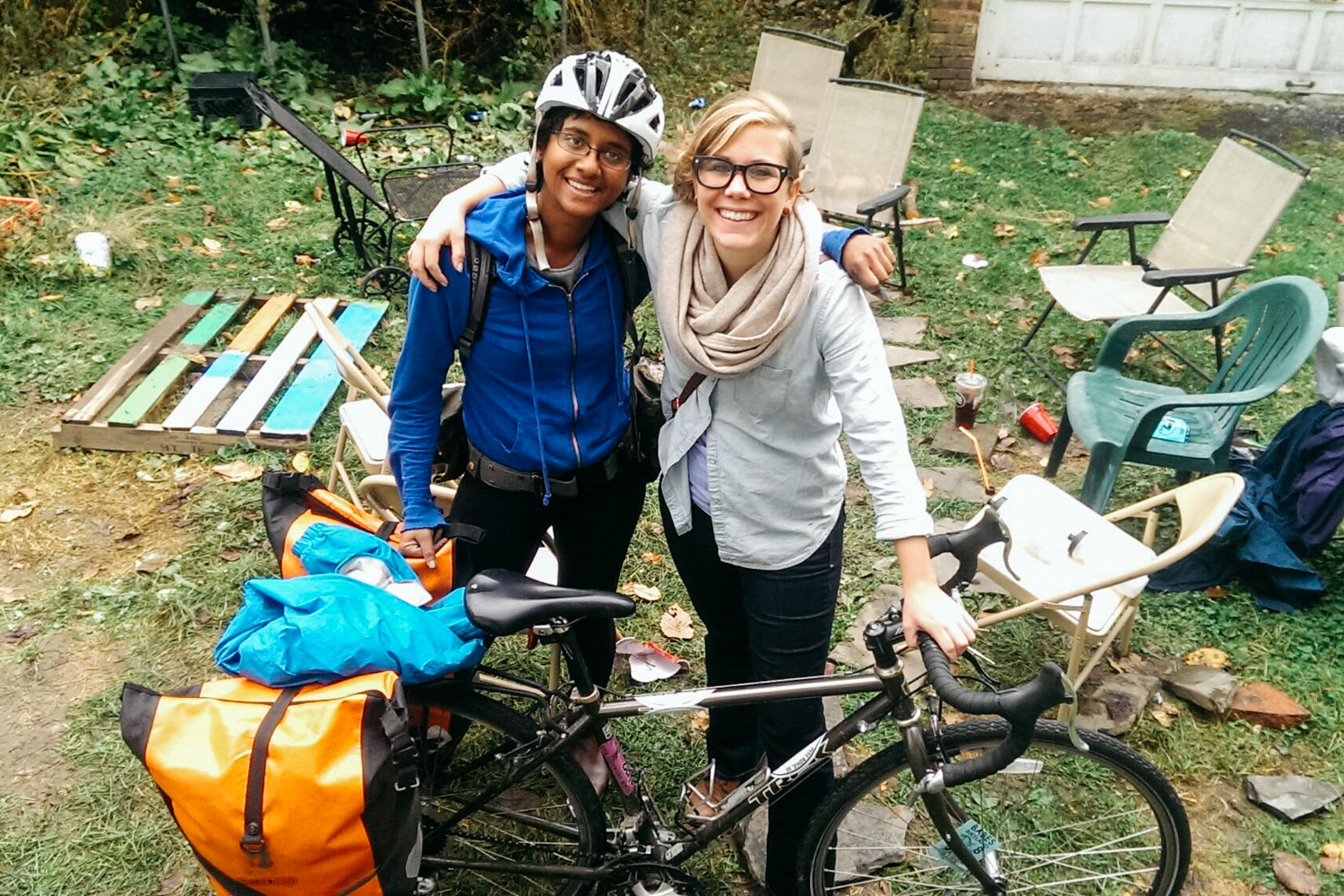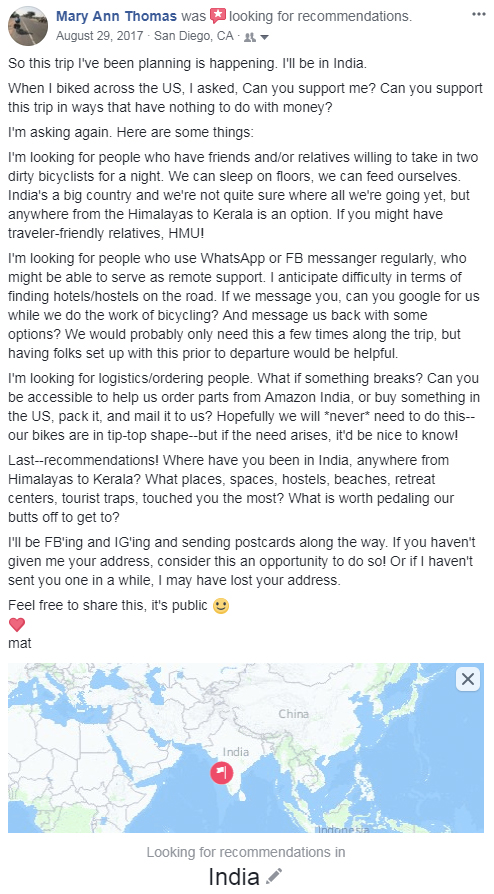Social Media as a Tool for Travel

Social Media as a Tool for Travel
For many women, people of color, LGBTQ folks, safety is the first thing on our minds when we think about travel. It’s daunting to go to a place you’ve never been, especially if you don’t anticipate there will be anyone who looks like you. It might feel safer to travel in cities or to stay in a group, to insulate ourselves from our otherness by staying within our comfort zones.
As the queer daughter of Indian immigrants, I find that I am rarely in a comfort zone. When I’ve bicycled across continents or driven thousands of miles alone for work, I have felt like the only person of color in hundreds of miles. When I biked across India, the very idea of the trip seemed both absurd and incredibly dangerous. In order to travel and adventure the ways I want to, I strategize around safety when traveling.
While many people use Facebook and Instagram to showcase where they’ve been, there are also many practical ways to use social media platforms. In my bike tours, road trips, and weekend adventures, I engage with my Facebook and Instagram community to cut costs, get information, increase my safety, and connect to people in places I’ve never been before.
On my bike tour across the US and Canada, I reached out to my Facebook community. I had money, and a family who could, if necessary, provide financial support. But I didn’t know anyone between the coasts. I’d end up biking across twelve states and provinces and only had people in four. I wrote a blog post asking for “Anything But Cash,” for example, support in the form of human connections along the way. I wanted a shield. The news and my East Coast upbringing had convinced me that the middle of the country would be xenophobic and racist. I didn’t know better, so I wanted protection.

Mary Ann (L) and Jada connected via Facebook
My brother and mom shared my blog post; my coworkers shared it with their friends and family who lived along the routes. I got emails from strangers who ended up hosting me along the way. In one town that sits on the northern border of the US, my coworker’s mom’s friends met me and led me, by bicycle, to their home. They fed me fruit and pizza and salad and ice cream. In the morning, I ate pounds of bacon and pancakes before heading out for the day. Here I learned what hospitality can mean, what giving myself up to being a guest and allowing myself to be taken care of can be. The kindness of strangers along my bike ride showed me that when I allow myself to be vulnerable, they might use that opportunity to show care for me, even if our politics differ. Rural spaces, with the intimate interactions they facilitate, can be kinder than I’d initially thought.
Here I learned what hospitality can mean, what giving myself up to being a guest and allowing myself to be taken care of can be.
When I biked across India with a friend, I employed a similar strategy. I wrote a Facebook post and asked people to sign-up for certain duties. I anticipated situations where we would have questions, but our wifi would be slow and time-consuming, so I wanted people who would be willing to do internet research for me.

I asked for people to sign up to help order gear on Amazon if needed, since the bikes we were riding aren’t super common on the streets of India. Finally, I wanted hosts, friends of friends along the way, so I asked if anyone knew people in India, or had family in India, and whether they could connect us. Maybe I wouldn’t need any of these resources, but I wanted a backup plan. We ended up getting a ton of information from friends who signed up; it was so reassuring to know that I could turn to this list of people when we had questions. It eased my stress to know I had a team of people looking out for me.
In the bike touring world, there’s a site called Warmshowers. It’s a platform to help bike tourists find free hosts along the way. While it’s specific to bike tourists, a lot of the hosts on it will accept you if you are, generally, an adventurer. There are hosts around the world and we turned to it often in India. We were hosted in almost every major city we traveled, which gave us both safety and personal connections to the places we were going. We also used Strava, an app that tracks one’s biking and running. There’s a social media component here, too, so my travel partner posted about our trip and asked for hosts. In a tiny town along the eastern coast of India, we met up with a new friend who acted as our host for the night.

Mary Ann met Eiko (pictured) via Warmshowers
These days, I avoid hotels when I travel. Facebook has a filter option, so you can type into the search bar: “My friends who live in—” and enter the name of the city, state, or country you’ll be in. I’ve messaged countless old friends based on this search function, and have stayed with many of them, some of whom I hadn’t seen in five or ten years. This, to me, is how social media can be harnessed to improve connections, increase safety, and reduce costs. For me as a woman of color, knowing I’ve got people in a certain city also shows me who I could reach out to in a time of need. Even if I don’t need to be hosted in a specific city, I want to know that there are people who got my back. People who might want to have dinner with or breakfast with, who can give me a recommendation or if, should shit go down, if I got robbed or assaulted or my car was broken into, there might be someone I could call or message.
Social media can be harnessed to improve connections, increase safety, and reduce costs.
I use Instagram more than Facebook these days, and I’ve benefited from similar connections. Strangers have reached out and, after some messaging back and forth, I have met new friends in random places. Instagram can also provide tangible weather information for places that don’t have reliable weather services. For example, when I planned on hiking across a frozen lake in Alaska, I was able to verify that people had been traveling on it and that I wouldn’t be the first.
Many people see travel as an exercise in privilege. When it comes to staying in fancy hotels and ordering $100 meals, it can be. But by using social media to increase safety, travel can become more accessible to women, people of color, and LGBTQ folks. So many of us are already travelers, through necessity and circumstance. By building connections and safety nets, we can go on adventures we’d never dreamed of.
Photos by Mary Ann Thomas
Mary Ann Thomas is a New Jersey-born-and-raised queer South Asian traveler. She writes about her adventures as a travel professional and long-distance bike tourist. See more of her writing on Postcards from MAT, and find her on Instagram and Facebook.
Be the first to comment